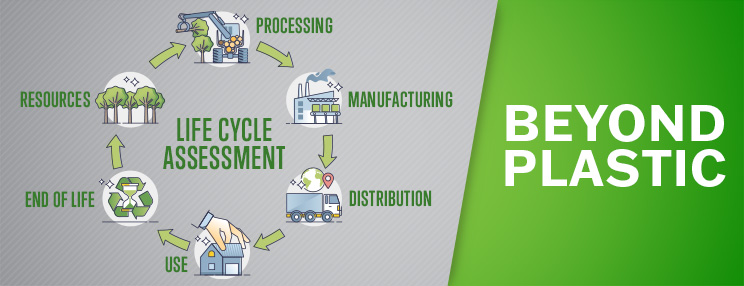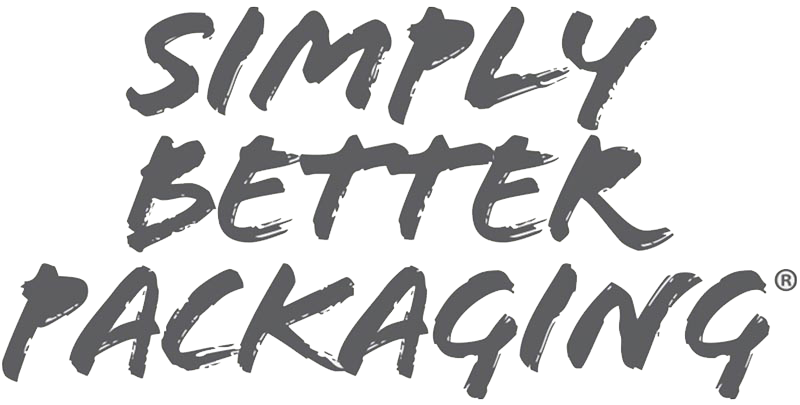Beyond Plastic

Unveiling the Hidden Truths of Other Wastes
Sustainability has become more important to consumers and businesses, especially since the pandemic [1], as 75% of consumers in a Boston Consulting Group study say they consider sustainability an important part of what they buy [2]. With that in mind, consumers must know as much as possible when it comes to the sustainability of a product they are looking to purchase, which includes what raw materials were used to make the product to what happens with the item once the consumer is done using it. This is also known as cradle-to-grave, and this approach reveals the impact that a product has on the environment from the moment the raw materials are extracted to once it is disposed of, and the way to obtain the information needed would be through a life cycle analysis (LCA). LCAs are important to understanding the full impact a product/material can make on the environment [3].
There are four phases to an LCA:
Phase 1: Goal and Scope
- The first phase of this process is to decide what is going to be analyzed and how deep the LCA is going to go [4].
Phase 2: Inventory
- Environmental inputs and outputs of a product include water, raw materials, energy, and emissions [4].
Phase 3: Impact Analysis
- What the impacts of the product are and how they are significant [4].
Phase 4: Improvement Assessment
- Looking at the conclusions of the assessment and basing goals for improvement based on the goals of the study [4].
There are also four stages in the life cycle assessment:
- Materials Extraction
- This part of the process involves extracting raw materials from the environment. These processes usually involve mining for resources that release a lot of carbon. Some resource extraction processes release more carbon than others [4].
- Process and Manufacturing of Raw Materials
- This stage is where the raw materials are turned into the final product. This usually emits carbon along with other forms of waste, including solid waste [4].
- Distribution of Products
- The items are sent to stores or other places where consumers can purchase them. Most emissions from this part come from transporting the item to where the consumer will purchase it [4].
- Use and Operation
- How, if at all, the product makes an impact while in use? Not all products make an impact while being used [4].
- Disposal
- This part is what happens to the item once the consumer is done using it, whether it be by landfill, recycling, or incineration. Some of these processes are going to be more impactful to the environment, like incineration and landfilling. Certain recycling processes are going to be more impactful than others as well [4].
So, what does this have to do with plastics? Plastics are often marketed as the bad guys when it comes to sustainability and other alternative materials like glass and aluminum are better options, but is that the case? The National Association for PET Container Resources (NAPCOR) compares LCAs between 16.9 oz plastic water bottles and 12 oz aluminum cans. They also compare 20 oz PET bottles with 12 oz aluminum cans and 12 oz glass bottles [3]. Here’s what they found:
- Between the aluminum can and 16.9 oz plastic water bottle, the aluminum can consume 80% more energy during production, created 80% more solid waste, used 53% more water, has a 74% higher global warming potential, and generates 68-83% more emissions that create acid and smog [3].
- Between the 20 oz PET bottle and the glass bottle, the glass bottle generated 14x more solid waste, expended 5x more energy during production, 5x more global warming potential, and released 7-10x more emissions that contribute to acid rain and smog [3].
- Between the 20 oz PET bottle and the 12 oz aluminum can, the aluminum can generate 3x more solid waste, used 5x more energy during production, 2x more global warming potential, and 2-3x more emissions that contribute to acid rain and smog [3].
By comparing the LCAs of the different materials, it was concluded that PET was the best option when it comes to reducing global warming due to a lower environmental impact [3]. LCAs are essential to knowing all of the information when it comes to the sustainability of a product and have been shown to debunk previous beliefs especially when it comes to plastic.
[1] Empowered Consumers Call For Sustainability Transformation (forbes.com)
[2] Does Sustainability Matter To Consumers? – Thinking Sustainably
[3] NAPCOR-37678_LCA_Executive_Summary_3.2.23.pdf
[4] Life Cycle Assessment (LCA): 4 Phases, Importance, Limitations (thechemistrynotes.com)
ABOUT PLACON
Since 1966, Placon has been a leading designer and manufacturer of innovative and sustainable plastic packaging for medical, food, and consumer goods markets. Placon has manufacturing operations in Madison, WI; West Springfield, MA; Elkhart, IN; and Plymouth, MN, and is currently ranked in the Top 20 in Plastics News 2024 Thermoformers Rankings. Placon delivers packaging breakthroughs that inspire better engagement between people and products.





